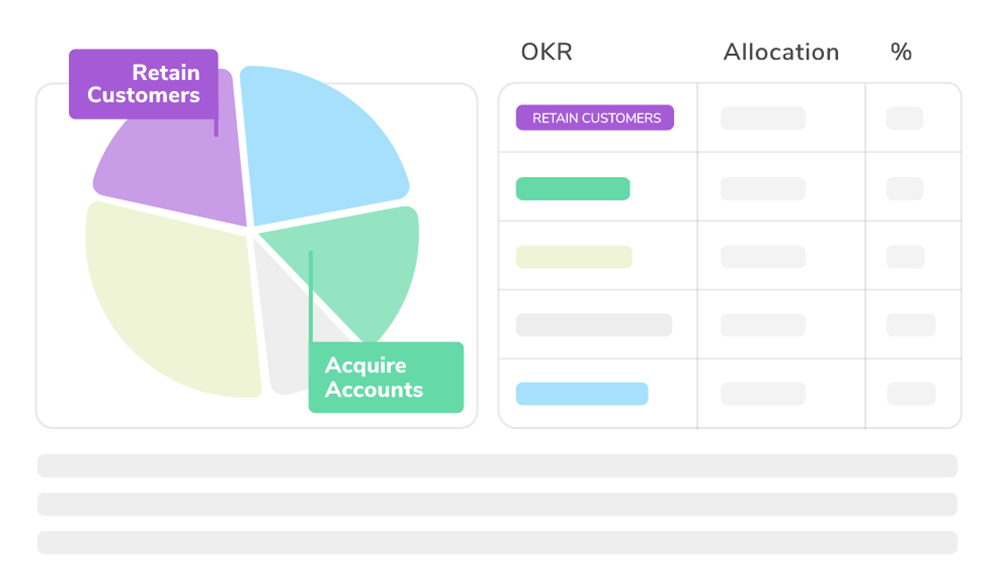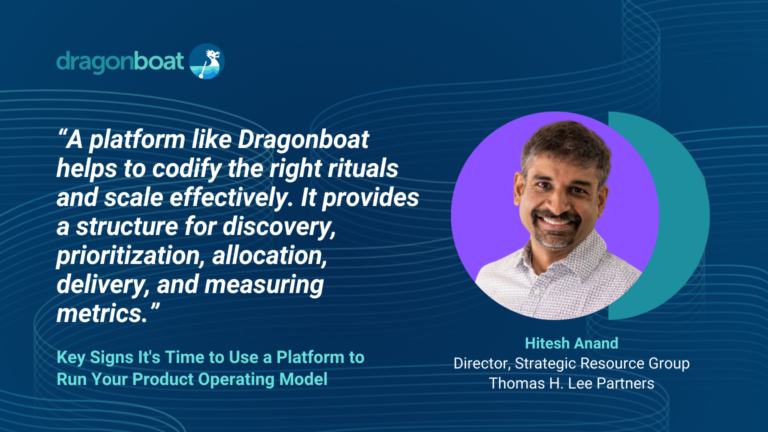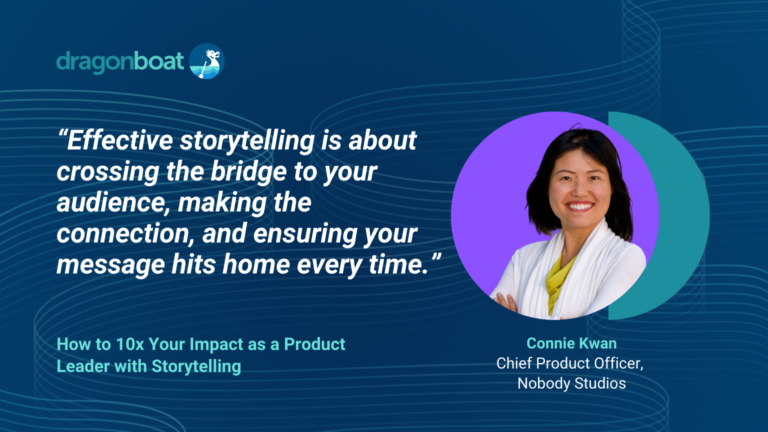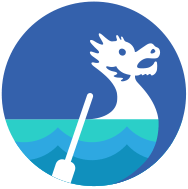Quarterly product planning, or quarterly alignment, is an integral part of a responsive organization to connect OKRs with execution. Quarterly planning has become even more critical in today’s distributed environment to align teams to row in the same direction, as highlighted in the Medium post, “The Cadence,” by David Sacks, PayPal’s first COO and the founder of Yammer and Craft Ventures.
The key driver for quarterly alignment (or bi/monthly for fast-moving companies) is the evolving product focus responsive to business needs. Goals such as conversion, retention, or market expansion are almost always present for every company but vary in importance at different times. Therefore outcome-driven product operations need to adjust prioritization frameworks and associated resource plans.
Effective quarterly product planning starts with strategizing based on goals and then allocating responsively. This is critical in enabling the rest of the teams to make their prioritization decisions with this big picture context.
During quarterly product planning, product leaders and their teams align on the next phase of focus within product functions and their engineering, business, and other key stakeholders.
How Do You Perform Quarterly Product Planning/ Roadmap Alignment?
To perform quarterly product planning well, follow these 4 (+2) iterative steps:
- Define key goals (you could try setting product OKRs) for the upcoming quarter and their respective resource allocation.
- Brainstorm and prioritize product ideas against these goals.
- Create high-level estimates / T-shirt sizes to identify resourcing needs or bottlenecks.
- Break the pod to work or bring work to the pod.
Steps 2 and 3 may happen iteratively (back and forth continuously).
Then, make sure to follow these ongoing steps:
- Communicate.
- Check-in and adjust.
Let’s look at these steps in more detail below.
Step-by-Step Quarterly Product Planning
1. Define Your Key Goals and Metrics (OKRs) for the Coming Quarter
Smart companies change their focus from one bottleneck area to another due to the diminishing return on investment in previous areas. For example, in one quarter, you may be focusing on growing new accounts, and a few quarters later, the focus needs to move to retention because churn has started to affect overall growth. Using data from your business review is a good starting point in identifying goals for the coming quarter.
Here are the common questions to ask when setting goals:
- What are the most pressing needs for the upcoming period? How should we balance the needs of new customers (sales) and existing ones (customer success)?
- Which long-term goals should we not forget to start?
- What are the must-have goals vs stretch goals?
- How much are we willing to invest in each goal, e.g. 50%, 30%, 20%? A goal without resource allocation will not succeed.
Setting OKRs without associated allocation creates gaps between executive wishes and the team’s ability to deliver.
Once your product goals are defined, it’s time to prioritize.
2. Brainstorm, Align, and Prioritize Ideas to Goals
This is the time to pull your ideas out from “backlog storage” to planning. Prioritizing ideas can be done through multiple views and should always include the dimension of goals.
Other dimensions include product themes and investment categories. Adopting quantitive prioritization is a bespoke way for product decisions so everyone can have the context of why a certain initiative or feature is ranked higher than others. Some common product prioritization frameworks include RICE, ROI, the Eisenhower Matrix (Urgent vs. Important), and MoAR — metric over available resources, a more tangible proxy for ROI.
When prioritizing ideas, evaluate constraints such as commitments to clients to hit revenue/ reduce churn. Although it’s not generally the best practice to commit features by date, it’s a fact of life we often face. Having these ideas “out of place” in prioritization is a good learning tool for future behavior changes.

3. Collect a High-Level Estimate to Identify Resourcing Needs or Bottlenecks
There are two sets of estimation – top-down (aka t-shirt size) and bottom-up (aka breaking down epics into stories and estimating each story and adding them up).
Bottom-up estimation is a waste of time at this stage because you will likely only move forward with a small subset of initiatives, if the planning is done right.
However, high-level estimation, in the unit of sprints or weeks is very important. Here are some key benefits:
- Prevent major misalignment/ understanding between product and engineering.
- Help identify resource needs (or bottlenecks) from within your team, other teams (including other scrum teams), UX teams, and marketing teams to secure support.
- Allow your team to come up with a different solution to achieve the goal if it costs too many resources, takes too long, etc.
Having only part of the feature completed does not deliver value. If there is not enough support from all teams required to bring the idea to market, consider switching to a different idea that does not require bottleneck resources. Alternatively, change your product approach or find a way to complete it without engineering effort.
Use the MoAR method to further prioritize ideas competing for the same resources.
Providing estimates allows you to check your plan against your goal allocation. This is critical, but how often do we actually do it when using spreadsheets?
4. Create a High-Level Portfolio Roadmap Plan
Once you have the priority and estimate, you can put together a high-level product roadmap. It can be a good idea to create a few roadmap scenarios to compare side by side or share with stakeholders for alignment.
What if there is a resource shortage or imbalance? Then one pod (scrum team) may end up with more work and another pod will have fewer roadmap items.
Normally, business demands fluctuate for each engineering pod (one or a few scrum teams supporting a product roadmap area).
There are 3 potential solutions in this case:
- Each pod prioritizes work within their area — but this does not create the best value at the portfolio level due to local optimization.
- Break up the pods to meet the fluctuating demand — this works in theory but usually negatively impacts team dynamics and velocity.
- Quoting a VPE friend — “Don’t break the pod to work, bring work to the pod.” The same pod may work on different areas periodically based on needs, which is a compromise between the 2 options above.
If the planning is slightly long-term, e.g 6 months or more, a high-level plan also helps prioritize hiring or tap into on-demand resource partners if appropriate.
Now you’ve completed the first 4 steps of quarterly product planning and alignment – the next 2 steps are essential to continue the portfolio cadence to monitor outcomes and adjust to changes.
The Product Portfolio Cadence – Post Quarterly Planning
Confirm and share your plan with your team so they have the context and big picture for their decision-making.
Have product operations connect your quarterly roadmap with your team execution tools, e.g. Jira, Shortcut, Asana, or Github Issues, to gain real-time visibility of progress and forecast potential issues or risks that may warrant a revision of the current plan.
While you may build intricate spreadsheets for planning, and manually pull out data for reporting, a better option is to adopt an integrated product portfolio platform like Dragonboat. It offers CPOs, product operations, and teams the context and continuity from goals and strategies to execution, to enable effective decisions for all involved in designing, building, shipping, marketing, selling, and servicing products.

Check-in monthly (or bi-weekly) to evaluate progress, urgent requests, changes in the state of execution (delay or scope increase), or losing resources for one reason or another. The adjustment often results in a new alignment/ plan following steps 2 to 4 with “what-if scenarios” in step 3, to re-align and update your roadmap, team, and stakeholders.




